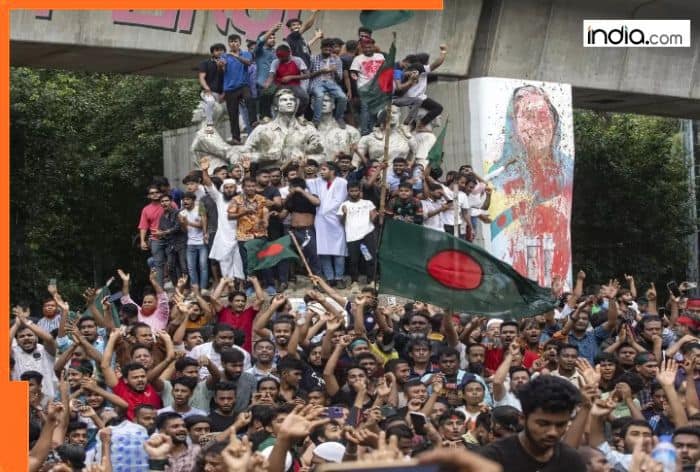The current state of Bangladesh economy presents a unique opportunity for India, which could fill the void created by Dhaka’s dwindling exports, especially in the textile industry.

Bangladesh Economy: Bangladesh economy was booming, and competing with India in GDP growth and other key economic indicators during former Prime Minister Sheikh Hasina’s rule, but since Hasina’s fall, the country has witnessed a rapid decline in economic growth, and is sinking deeper into a quagmire of recession.
According to reports by the World Bank and IMF, Bangladesh’s GDP growth rate has halved due to rampant unemployment plaguing the country since Hasina’s ouster. Bangladesh’s textile industry, the backbone of country’s economy, is on the verge of collapse and seeks a bailout package to dig itself out of trouble.
GDP growth halved
As per the World Bank report released on Thursday, Sheikh Hasina’s toppling scared off investors, which weakened Bangladesh’s industries, negatively impacting the country’s economic growth.
The report noted that Bangladesh was one of the growing economies in the world before the Covid-19 pandemic, boasting a GDP growth rate of 7.9 percent, but the economy has drastically slowed down since Hasina’s fall in August last year, with World Bank forecasting the country’s economy to grow at a rate of 4.1 percent in 2025, while the IMF estimates a lower growth rate of 3.8 percent.
Bangladesh plagued by rampant inflation
Apart from the economic slowdown, Bangladesh has also been plagued by runaway inflation, which has climbed to 10.34 percent at present, from 7.7 percent in 2022. The World Bank has listed Bangladesh, Pakistan, and Sri Lanka in the list of countries likely to face most economic troubles this year.
“Under Hasina’s rule, Bangladesh — along with India, Indonesia and 36 other nations — entered the ranks of middle-income countries but now, as the World Bank report states, political turmoil has “dampened economic activity and worsened investor confidence,” Strategic affairs expert Brahma Chellaney said in a post on X.
Meanwhile, the World Bank report also noted that the high inflation has significantly weakened the purchasing power of Bangladeshi citizens, which has further slowed down development.
Experts warn rising inflation could fan further unrest in the country, and the slowing of work in factories, especially the textile industry, will directly impact Bangladesh’s exports.
Opportunity for India
The current state of Bangladesh economy presents a unique opportunity for India, which could fill the void created by Dhaka’s dwindling exports, especially in the textile industry.
India’s economy continues to grow at a steady rate of over seven percent, and owing to the unrest in Bangladesh, which is severely affecting production, several global players who are facing losses due to this, are now mulling to shift operations to India and focusing on Indian manufacturers, according to reports.
India-Bangladesh relations
India-Bangladesh relations have hit an all-time low after the ouster of former Prime Minister Sheikh Hasina, and an interim government led by Nobel laureate Muhammad Yunus, coming to the helm in Dhaka.
Widespread communal violence has been perpetrated against minorities in Bangladesh, especially Hindus, which has soured Dhaka’s ties with New Delhi, with the latter accusing the Yunus-led interim government of not doing enough, and turning a blind eye to the atrocities perpetrated by radical Islamist elements against the minority Hindu community in the country.

